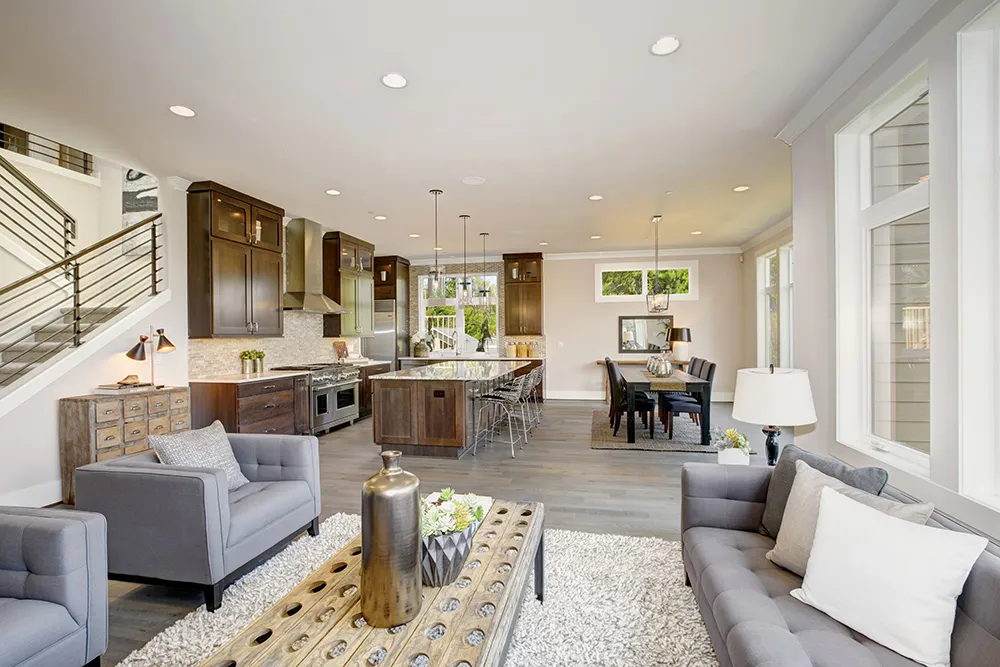If you own an investment property, one of the biggest decisions you’ll face is whether to rent it furnished or unfurnished. While furnishing your rental can attract certain tenants and allow you to charge higher rent, it also comes with additional costs and responsibilities. Let’s break down the pros and cons to help you decide what’s best for your property.
Pros of Renting a Furnished Property
1. Higher Rental Income
Furnished rentals typically command higher rent than unfurnished ones, as tenants are paying for the convenience of moving into a ready-to-live space. This is especially true in high-demand areas, such as city centers, vacation destinations, and business hubs.
2. Appeals to Short-Term Renters
If your rental is in an area with a high volume of corporate professionals, digital nomads, or traveling nurses, a furnished property can attract tenants looking for a temporary home. This can result in faster occupancy rates.
3. Tax Benefits
Furniture, appliances, and décor can be written off as business expenses, reducing your taxable income. Keep in mind that these items depreciate over time, but they still provide financial benefits come tax season.
4. Easier to Market as a Turnkey Rental
A fully furnished property is attractive to tenants who don’t want the hassle of buying and moving furniture. This can be a major selling point in rental listings, leading to faster leasing.
Cons of Renting a Furnished Property
1. Higher Upfront Costs
Furnishing a rental unit requires an upfront investment in furniture, appliances, décor, and essentials like cookware and linens. Quality matters, as durable furnishings reduce the need for frequent replacements.
2. More Frequent Turnover
Furnished properties often attract short-term renters who stay for a few months rather than years. While this means you can adjust pricing more frequently, it also requires more effort to market the property and find new tenants.
3. Potential for More Wear and Tear
Furniture, appliances, and décor will naturally experience wear and tear, leading to higher maintenance and replacement costs. If tenants aren’t careful, items may be damaged, requiring repairs or replacements more often than in an unfurnished unit.
4. Limited Tenant Pool in Some Markets
In some areas, long-term renters prefer to bring their own furniture. If the majority of renters in your market are looking for unfurnished properties, it may take longer to find tenants for a furnished unit.
Key Considerations Before Furnishing Your Rental
- Location Matters: Furnished rentals perform well in business hubs, near universities, and in tourist-heavy areas. Research your market to see what’s in demand.
- Target Tenant Profile: Are you aiming for short-term renters, corporate professionals, or long-term tenants? Understanding your ideal tenant will help you decide.
- Cost vs. Return: Weigh the upfront investment in furniture against the potential for higher rental income. If it takes too long to recover your costs, an unfurnished rental may be a better option.
- Insurance & Security Deposits: Ensure your lease agreement includes provisions for furniture damage and consider increasing the security deposit to cover potential losses.
Final Verdict: Should You Furnish Your Rental?
Renting a property furnished can be highly profitable in the right market but comes with additional costs and responsibilities. If your location attracts short-term tenants, business travelers, or vacationers, a furnished rental may be the way to go. However, if you’re targeting long-term renters in a traditional residential area, an unfurnished rental may be easier to manage with fewer turnover costs.
Before making your decision, research your local market, consider your financial goals, and evaluate the logistics of maintaining a furnished property. Ultimately, the best choice is the one that aligns with your investment strategy and tenant demand.


